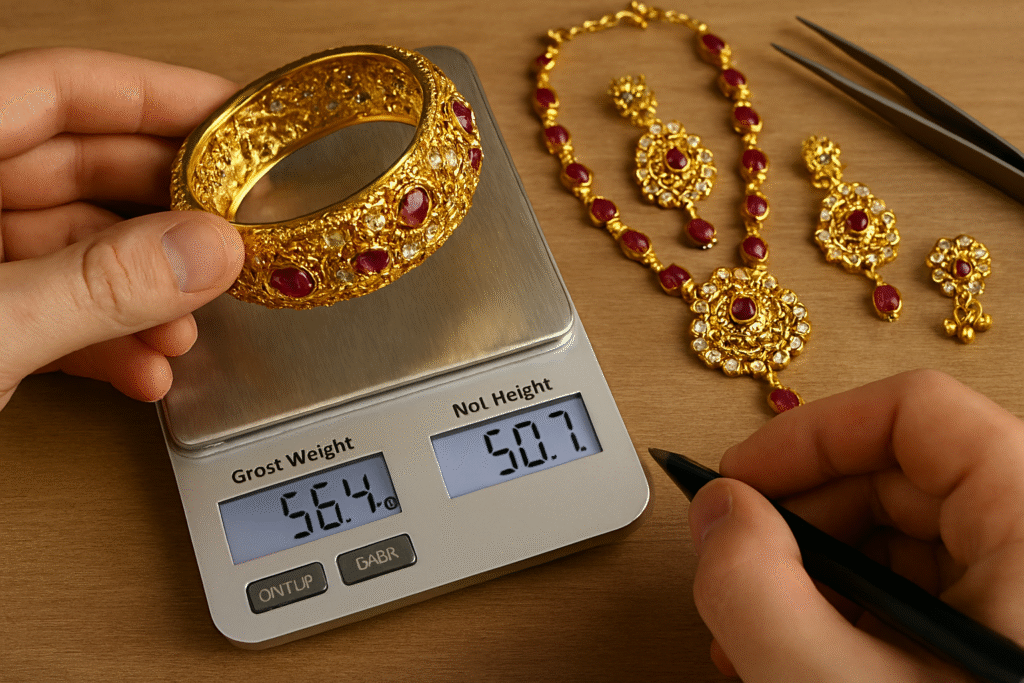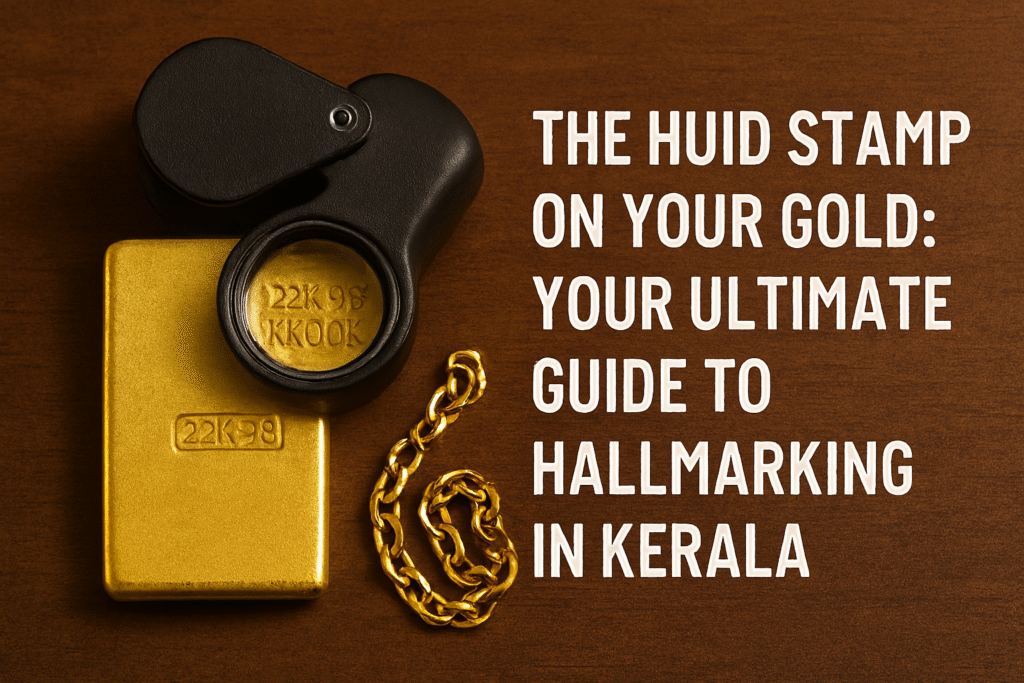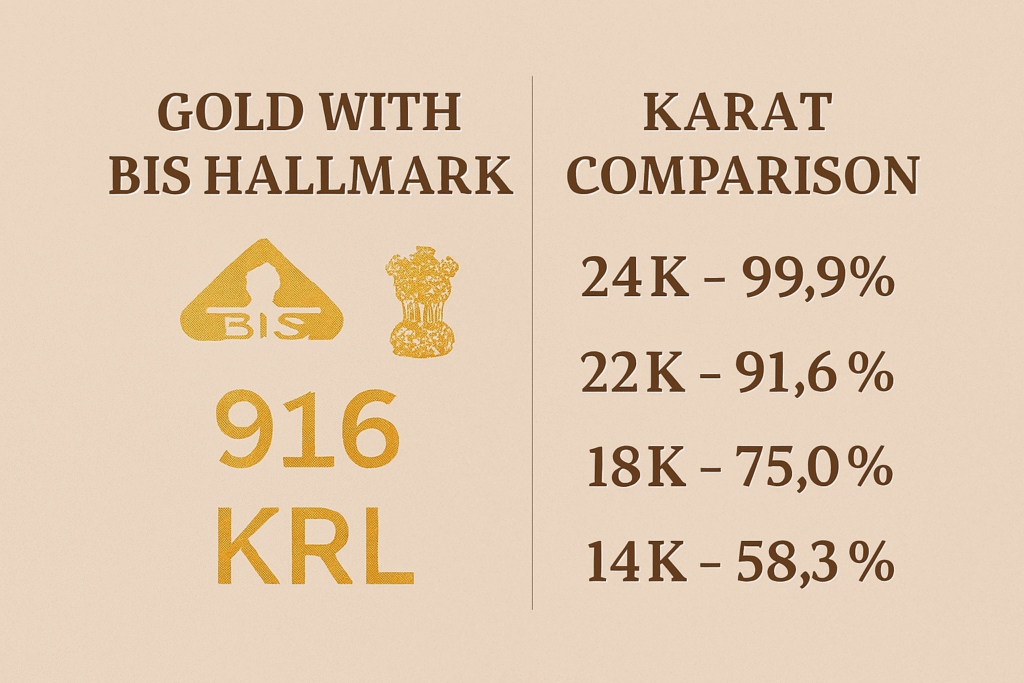Learn why you must ask about gross weight vs. net weight when buying stone-studded jewellery in Kerala. Avoid paying gold rates for stones in Nagapada Thali, jhumkas, and bangles.
When you buy stone-studded jewellery, one question decides whether you get real value for your money.
Are you paying for gross weight or net weight?
I’ve seen countless buyers pay the price of gold for colourful stones. These stones have no resale value, yet the bill is calculated as if they were gold.
Here’s how you can protect yourself.
Gross Weight vs. Net Weight
- Gross weight = weight of gold + stones + enamel + lac.
- Net weight = only the gold weight.
- Jewellers often bill on gross weight unless you ask directly.
Why This Matters
- Popular pieces like Nagapada Thali, stone-studded jhumkas, and bangles carry glass, synthetic, or semi-precious stones.
- The stones add extra weight but don’t fetch anything when you resell.
- If billed on gross weight, you are paying the gold rate for worthless stones.
What You Should Ask
- “Is this bill based on gross weight or net weight?”
- “Can you show me the net gold weight separately on the bill?”
- “What is the stone weight and stone cost?”
Practical Example
- A Nagapada Thali weighs 25 grams gross.
- The net gold weight is 18 grams.
- If you pay for 25 grams at today’s gold rate, you are overpaying for 7 grams of stones.
Action Points for You
- Always demand a bill that clearly separates:
- Gold weight
- Stone weight
- Making charges
- GST
- Never agree to a price without knowing the net weight of gold.
- Compare the same design across jewellers—some charge only for net gold, others inflate the price with gross weight.
When you buy stone-studded jewellery in Kerala, this single question protects your money:
Am I paying for gold or for stones?



